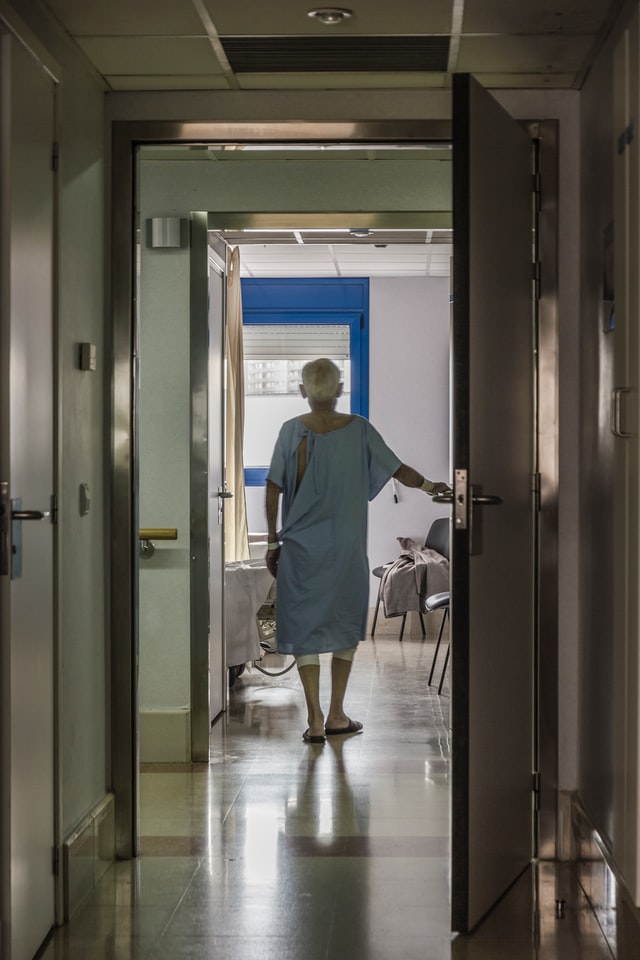
What Happens After Covid? A look at Rehabilitation Care
As healthcare professionals become more familiar with the novel coronavirus, we’re starting to get a better picture of what life post-Covid looks like for patients. Even with a new 90% effective vaccine from Pfizer and BioNTech1, it’s important to focus on what happens even after a person is infected and recovers from the virus. Physical and cognitive rehabilitation are at the forefront of recovery.

Intensive Care Unit and Delirium
A video news report from The Guardian looks at recovering patients who were in the Intensive Care Unit (ICU)2. Some Covid-positive patients arrive at the hospital, and then the next thing they know, it’s weeks later. After spending weeks on a ventilator, patients need intensive physical therapy to start their recovery. Some patients experience post-intensive care syndrome (PICS) and continue to have health problems long after they leave the hospital5.
“…’up to 80% of the sickest intensive care unit (ICU) populations’ develop delirium”
Timothy D. Girard, “Delirium in the intensive care unit” 2008
Critically ill patients, especially those on ventilators, can also develop a neurocognitive disorder known as delirium. Delirium can cause patients to hallucinate, have fluctuating mental status, trouble focusing and trouble making new memories7. According to a 2008 study, “up to 80% of the sickest intensive care unit (ICU) populations” develop delirium3. It is one of the most common behavioral signs of a brain dysfunction in the ICU. More recently, The Atlantic published a new documentary discussing Covid-19 patients who developed delirium. One of the survivors, Leah Blomberg, doesn’t even remember being taken to the ICU and being on a ventilator for 18 days4.

Rehabilitation Challenges
33% of all patients on ventilators, and about 50% of patients who stay for at least one week in the ICU can develop ICU-acquired body weakness5. Because of this, there is often a team of physiotherapists in the recovery wards helping to wean patients off ventilators. A consultant physiotherapist, David McWilliams, said “We know they can lose something in the region of around 20% of their muscle in the first 7 days of that admission…”2. The challenges for physical therapy involve not only improving patients’ lung function, but also to get patients to do simple activities such as sitting up or getting out of bed. Patients may feel a weakness in their legs, hands and fingers6.This makes every-day tasks even more complicated, on top of their other persisting symptoms.
Long-term Symptoms
Even without going to the ICU, Covid-19 patients have reported other long-term symptoms. Some of these include joint pain, fatigue, difficulty with concentration, depression, chest pain, and others8. There can also be more serious long-term complications, such as inflammation of heart muscles or acute kidney injury, but these seem to be less common8. It is important that patients begin rehabilitation as soon as they can.

Starting Early Is Key
The earlier that rehabilitation starts, the better the outcome for patients and hospitals. Timely rehabilitation intervention could reduce in-patient admission time by 20% 9. In reducing that time, hospitals can take care of more patients and deliver care earlier.
It’s important to look out for early signs of cognitive impairment in the ICU, but they’re not always easy to spot. As Katharine Seagly, PhD, a clinical neuropsychologist, said in her interview for University of Michigan’s Health lab, “…cognitive changes are often less obvious initially, but can pose a great risk to patient safety”6. It has been found that longer ICU delirium is the major independent risk factor for long-term cognitive impairment7. One way to help with delirium, is to encourage patients to do physical and cognitive rehabilitation. But how can patients receive treatment when there is an ongoing pandemic?

The Future With Telehealth
This is where telehealth comes into the picture. In an interview for SporTherapy, Kevin Wait stated that “Telehealth and ‘telerehab’ have become a common practice for many of us [physical therapists], and we are learning how effective this can be in treating many common conditions”5. In speaking about outpatient virtual visits, Sean Smith, M.D., said, “[a]lthough there are some limitations, this medium is here to stay…”6. It seems that a hybrid system of in-patient visits and telehealth will be the future of healthcare delivery.
Sources And More Information
- “Pfizer and BioNTech Announce Vaccine Candidate Against Covid-19 Achieved Success in First Interim Analysis from Phase 3 Study.” Pfizer, Pfizer, 9 Nov. 2020, https://www.pfizer.com/news/press-release/press-release-detail/pfizer-and-biontech-announce-vaccine-candidate-against
- Ochagavia, Ekaterina. “How I Help Coronavirus patients to walk again—video.” Edit. Lamborn, Katie. Edit. Chulani, Nikhita. The Guardian. Birmingham, United Kingdom. 28 May. 2020. Video https://www.theguardian.com/world/video/2020/may/28/covid-19-rehab-the-journey-from-waking-up-to-walking-again-video
- Girard, Timothy D et al. “Delirium in the intensive care unit.” Critical care (London, England) vol. 12 Suppl 3,Suppl 3 (2008): S3. doi:10.1186/cc6149 https://www.ncbi.nlm.nih.gov/pmc/articles/PMC2391269/
- Buder, Emily, et al. “’COVID-19 Is a Delirium Factory’.” The Atlantic, Atlantic Media Company, 8 May 2020, https://www.theatlantic.com/video/archive/2020/05/icu-delirium/611155/
- “Coronavirus Treatment: How PT Helps with Life After COVID.” Health New You Can Use, Sportherapy, 18 June 2020, https://www.sportherapy.com/2020/06/pt-coronavirus-treatment/
- Urban, Kylie. “Rehabilitation Care Is Needed for Many COVID-19 Patients.” MHealth Lab Blog, Michigan Medicine University of Michigan, 14 July 2020, 12:14, https://labblog.uofmhealth.org/body-work/rehabilitation-care-needed-for-many-covid-19-patients
- Marra, Annachiara et al. “Intensive Care Unit Delirium and Intensive Care Unit-Related Posttraumatic Stress Disorder.” The Surgical clinics of North America vol. 97,6 (2017): 1215-1235. doi:10.1016/j.suc.2017.07.008. https://www.ncbi.nlm.nih.gov/pmc/articles/PMC5747308/
- “Long-Term Effects of COVID-19.” Centers for Disease Control and Prevention, Centers for Disease Control and Prevention, 13 Nov. 2020, https://www.cdc.gov/coronavirus/2019-ncov/long-term-effects.html
- Zhu, Yuetong et al. “Summary of respiratory rehabilitation and physical therapy guidelines for patients with COVID-19 based on recommendations of World Confederation for Physical Therapy and National Association of Physical Therapy.” Journal of physical therapy science vol. 32,8 (2020): 545-549. doi:10.1589/jpts.32.545 https://www.ncbi.nlm.nih.gov/pmc/articles/PMC7443542/

